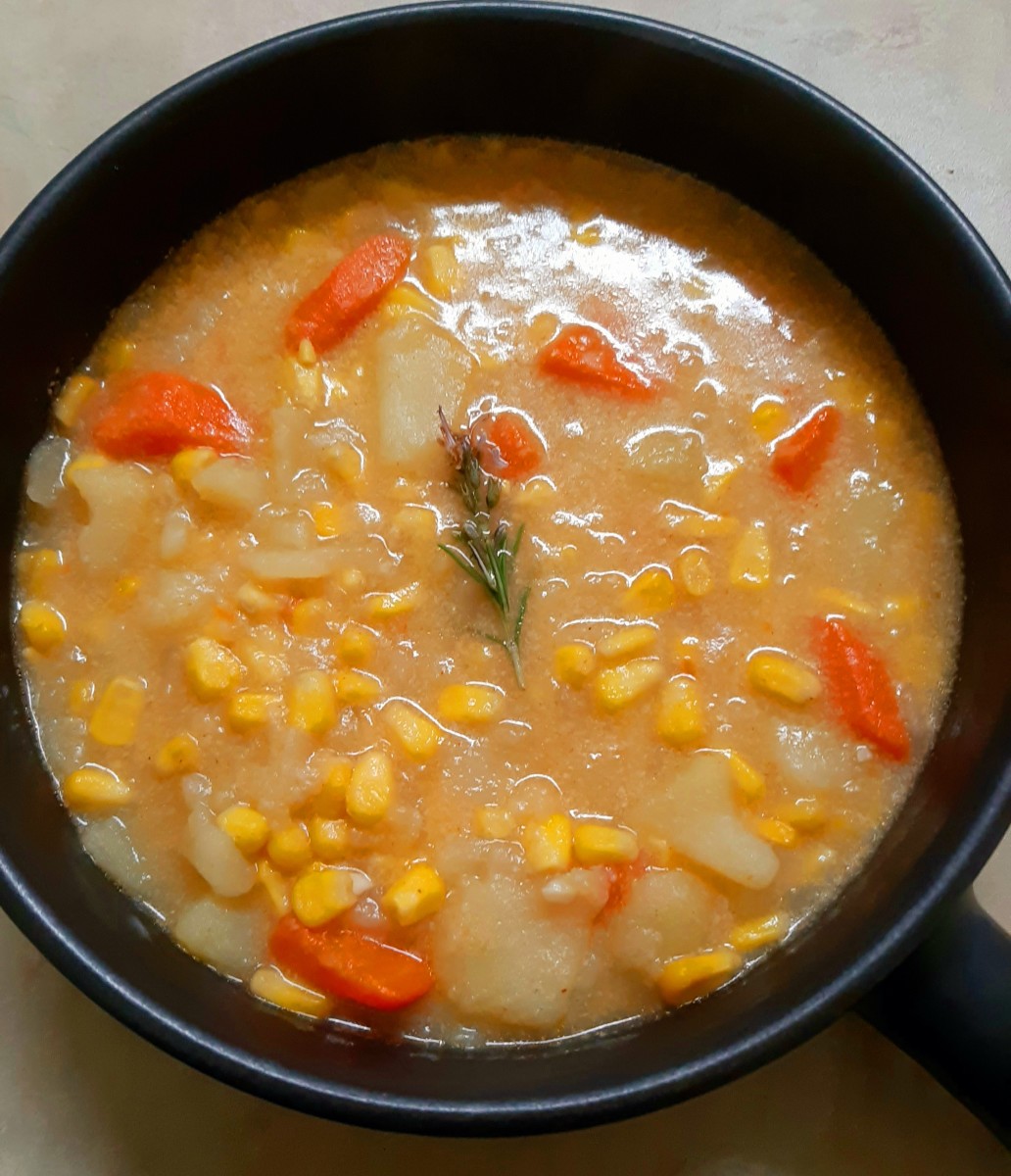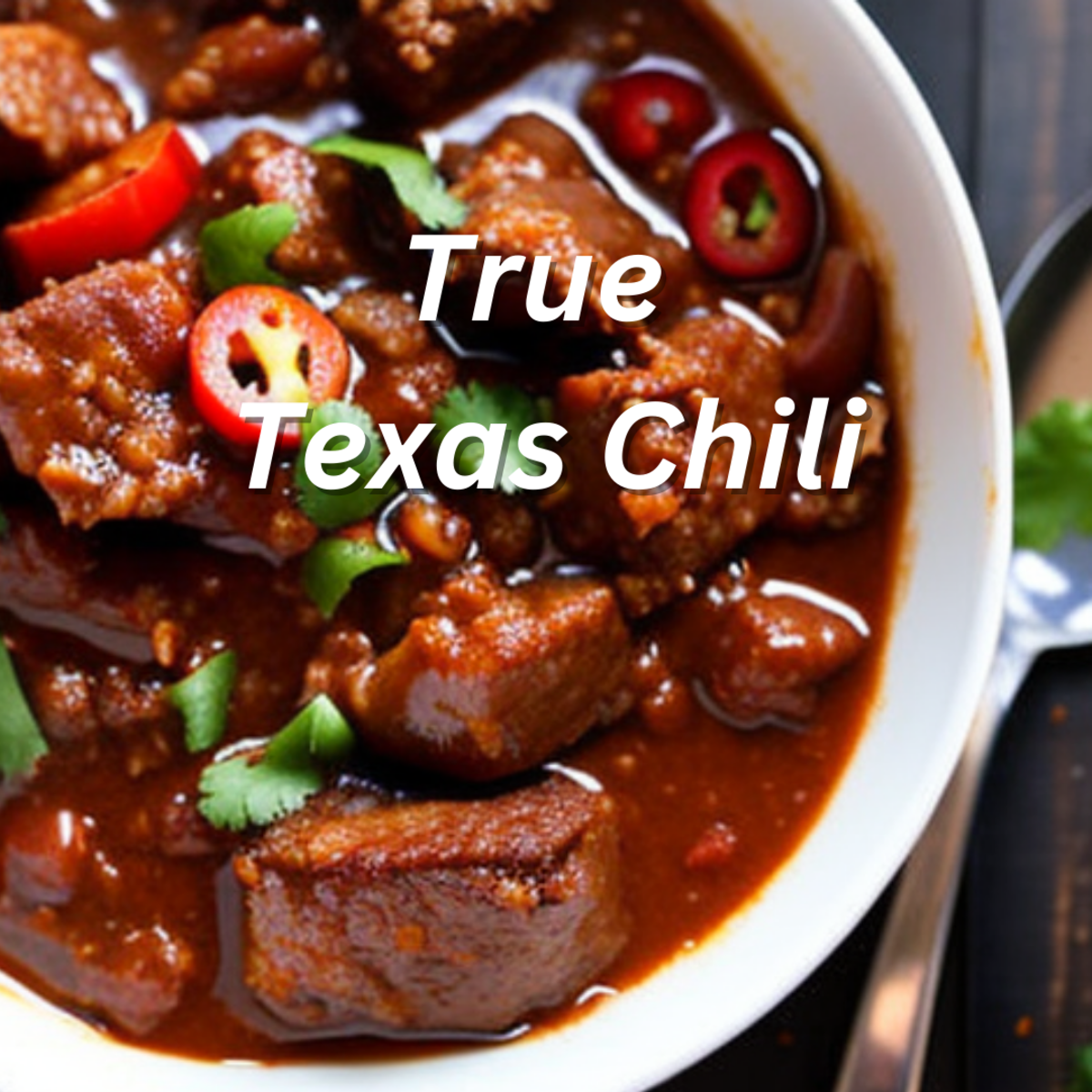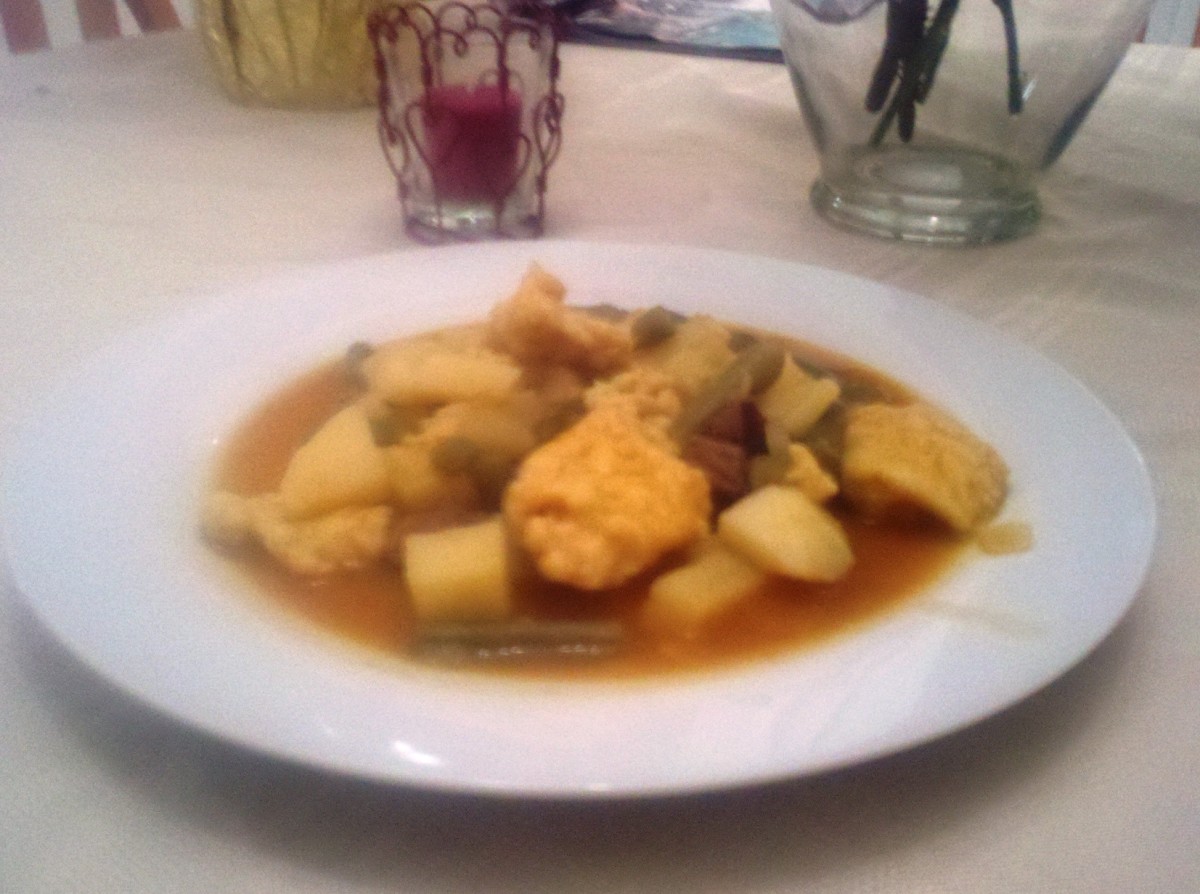- HubPages»
- Food and Cooking»
- Main Dish & Side Dish Recipes»
- Stew Recipes
Newfoundland Seafood Chowder!
Newfoundland Seafood Chowder
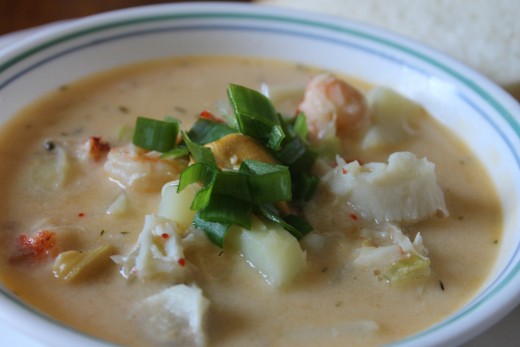
Newfoundland Seafood Chowder
Seafood Chowder is considered the epitome of Northern Atlantic cuisine. From Newfoundland Labrador to the New England states, each region has claimed it as it's own, giving seafood chowder it's own little twist.
To give you a little history, the word 'chowder' has it's origins in the Latin word 'calderia', which originally meant a place for warming things but later came to mean a cooking pot. Calderia gave us the word 'cauldron', which became 'chaudiere' in French. From there comes the Old English word, 'jowter', for 'fish peddler'. The Oxford English Dictionary traces the word 'chowder' to the fishing villages of the Cornwall region of England and Brittany, France, which are located across the English Channel from one another. When fishing ships returned from sea, each village had a large 'chaudiere' waiting for a portion of each man's catch, no matter what that was, to be served later as part of one big community welcome home celebration.
By the end of the 15th century, more Europeans were fisherman than any other occupation except farming. Fish was a source of protein that was easy to preserve, transport, purchase and prepare. In 1497, John Cabot, an Italian navigator and explorer who was commissioned by Henry VII of England, discovered North America, widely believed to have landed at Cape Bonavista on Newfoundland's east coast. The discovery of the rich fishing grounds off of Newfoundland attracted the attention of Western European countries and before long, English, French, Irish, Spanish and Portuguese fishermen made annual trips to the 'New Found Land' to catch cod. Given the length of the journey and no doubt the brutality of the Atlantic seas, many decided to settle in this new land abundant with fish.
As a result, the tradition of 'chaudiere' continued on in North America. Eventually, colonists started to migrate to the mainland in Nova Scotia, New Brunswick and Prince Edward Island, and south-east to Maine, New Hampshire, Vermont, Massachusetts, Rhode Island and Connecticut, and with them took chaudiere/jowter/chowder with them.
Despite it's origins in seafood, chowder didn't stop there! It spread inland and south with vegetables such as corn taking the place of seafood when seafood wasn't available. In Key West, Florida, Conche Chowder is very popular where conche is the main seafood and maize, or corn, is added.
Newfoundland Seafood Chowder
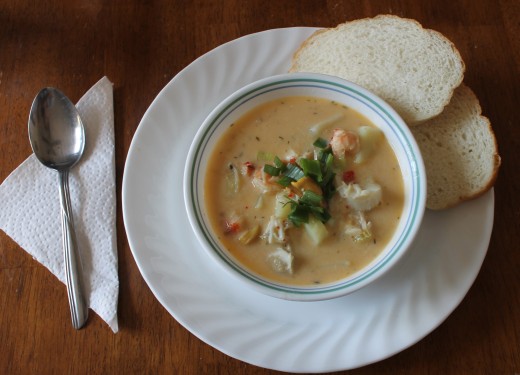
A Trip to My Acadian Roots
While I am a Newfoundlander born and bred, as is my mother and siblings, my father came to Newfoundland in 1957 as a young constable with the Royal Canadian Mounted Police. Dad was born and raised in Cape Breton, Nova Scotia, on a little island called Isle Madame. Isle Madame is predominantly Acadian, meaning descendants of French colonists, but my father's ancestry as a Power can be traced back to the Powers of Waterford, Ireland.
Growing up, we visited dad's hometown on Isle Madame annually, a tradition I still follow to this day. A couple of year's ago, we went to Isle Madame for a Power Family Reunion and while there, I was asked by my host cousin if I would make a Seafood Chowder for a small group of 25 relatives. My first instinct was to say, 'Sure!", but the more I thought about it, the less enthusiastic I became. You see, traditional Seafood Chowder is made with copious amounts of heavy cream and whole milk and, as such, is very high in fat. I make a conscious effort to cook a little 'healthier', reducing the fat and sodium in everything I cook as much as possible, while still delivering high flavour.
But, how would my fisher family members, steeped in tradition, receive my twist on a healthied-up Seafood Chowder? I'm not going to lie...I considered caving and making the chowder full fat/full sodium. But then I thought, 'what if I make it my way and just don't tell them it's healthied-up until after they ate it?'. I know....devious, under-handed, misleading.
The thing about cooking for a group of people, small and large alike, is that no matter what, you're putting a bit of yourself out there, open to criticism. Full fat or healthied-up, either which way was a roll of the dice. I decided I had to be true to myself and stick to my philosophy on food and let the chowder fall where it may!
Feeling just a little anxious, on the morning of the making of the chowder, I asked my cousin what seafood she had on hand to determine what we were going to need to go buy. Within 5 minutes, my cousin's husband, Clayton, had plunked down bags of freshly cleaned shrimp, scallops, lobster, cod, crab and clams, and another bag of live mussels. Okie dokie!! This was really going to be a veritable smorgasbord of oceanic delights!
I then said I needed some potatoes, onion and green onion. The next thing I know, I see Clayton outside pulling the fresh veg out of his garden. Holy smokes...this was really going to be something quite spectacular! Fresh seafood, fresh veg, I was in Cooks' Heaven! There were only a few ingredients I needed so my cousin, Trudy, and I jumped into her red Volkswagon Beetle, (I kid you not), and drove to the local grocery/liquor store where I bought fresh thyme, clam juice, locally made organic butter, (I know, right?), and some fat free half and half, which is considerably healthier with less calories and fat than heavy cream. At the liquor store I bought an inexpensive bottle of chardonnay, a quick stop at the local 'patisserie' for a few loaves of fresh French bread and then back to the kitchen, in the Little Red Bug with my cousin.
Newfoundland Seafood Chowder Ingredients
- 1 lb mussels
- 2/3 c. white wine, (ie/ chardonnay)
- 3 Tbsp butter
- 3 stalks celery, diced
- 2 medium onions, diced
- 1/2 tsp freshly ground sea salt
- 1/2 tsp paprika
- 1/2 tsp gresh ground black pepper
- 3 Tbsp all purpose flour
- 1 and 1/2 cups water
- 1 cup clam juice
- 2 medium Yukon Gold potatoes, peeled and cubed
- 1/2 lb cod, cubed, (can substitute with halibut or haddock)_
- 1/2 lb. scallops, sliced in half horizontally
- 1/2 lb cooked crab, cubed
- 1/2 lb. cooked lobster, chopped
- 3 c. low fat half and half cream
- 4 sprigs fresh thyme
- 3-4 green onion, finely chopped, (for garnish)
As you probably have noted, I added more seafood to my Newfoundland Seafood Chowder than noted in the ingredients above. If you're going to add a larger variety of seafood, just decrease the amount of each or increase the liquid amount. Chowder should be more soupy than thick like a stew, or at least that's my opinion.
I also had to triple the recipe because I was feeding 25 people. I can't tell you the pressure I was feeling cooking such a traditional dish for a group of people well versed in chowder! My cousin Trudy was my sous chef .She made a comment somewhere along the line that she never saw a seafood chowder made with wine, thyme and low fat cream, but she was excited to see how things would turn out. I did, however, swear her to secrecy! If even one person got wind of the fact that I was making a healthier version of their beloved chowder, I could be drawn and quartered!
Now...on with the chowder! Step 1: Scrub uncooked mussels, removing any 'beards'. Discard any mussels that don't close when tapped. Add wine to a large Dutch oven and bring to a boil over medium high heat. Add mussels, cover and let simmer for 2-3 minutes. Reduce heat and continue simmering for another 5 minutes or so until mussels are opened. Strain mussels, reserving liquid. Discard any mussels that have failed to open. When cool enough to handle, remove mussels from shells and discard shells.
Step 2: Melt butter in a large Dutch oven over medium high heat. Add onions, celery, salt, pepper and paprika and saute until onions are tender, about 5-7 minutes. Add all purpose flour and stir constantly until a golden roux, or thickener, is formed. Pour in reserved mussel broth, clam juice and water and bring to a boil, scraping up all the yummy brown bits from the bottom of the pot. Add sprigs of thyme and peeled, cubed potatoes. Let boil for a couple of minutes and then reduce heat and simmer, covered, until potatoes are fork tender, about 15 minutes.
Step 3: Add cod, scallops, lobster and crab meat and bring to a low boil. Reduce heat and let simmer 5 minutes. Stir in half and half cream and reserved mussels. Continue stirring until heated through, about 3-5 minutes. Using a slotted spoon, retrieve, remove and discard thyme sprigs. Ladle chowder into individual bowls and garnish with finely chopped green onion.
Newfoundland Seafood Chowder
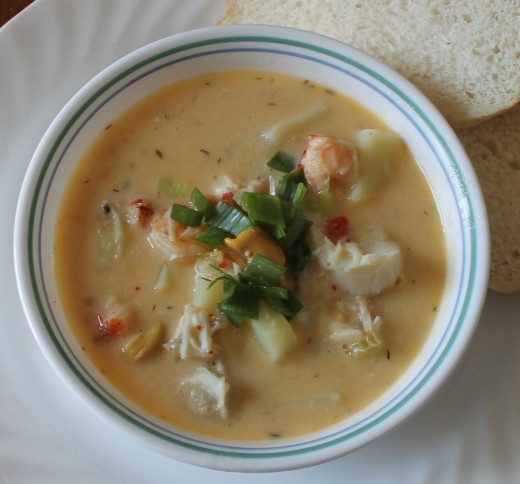
Newfoundland Seafood Chowder
Before laying a single, solitary bowl of Newfoundland Seafood Chowder onto the table, I ladeled some chowder into a small bowl and dug two spoons out of the drawer, one for my cousin and one for me. We stood there, in the middle of her kitchen, me with the bowl in my hand, looking at one another and then at the chowder and then scooped our spoons into the luxurious-looking chowder. As we savoured that first spoonful, Trudy and I just looked at each other and smiled. She told me, and I'm paraphrasing here, that of all the seafood chowders she's had over the years, she had never tasted one so light and flavourful and because it wasn't weighed down by the heaviness of thick cream and condensed milk, you could actually taste the flavour of each individual type of seafood.
That was all well and good but my Newfoundland Seafood Chowder still had to pass the taste test of my father, Uncle Rudy, Clayton and about 20 other family members with a long history of chowder eating! I was sweating bullets in the kitchen, eavesdropping on the conversation in the dining room, waiting to hear what they thought. Silence.
What could the silence possibly mean? Are they all keeled over into their chowder? Are they looking at one another with shock and dismay over the blasphemous abomination I was calling seafood chowder? I couldn't take anymore...good, bad or indifferent, I had to know what these experienced chowder lovers thought of my healthied-up version. I strut on into that dining room, ready to defend the elegance and health benefits of my chowder I had just created! I would tell them a thing or two and then tell them the next time they want chowder they could make it themselves!
But when I walked into the dining room I was stopped dead in my tracks by the vision of a roomful of people quietly and eagerly eating spoonful after spoonful of my Newfoundland Seafood Chowder, the only words uttered being, 'Could you pass the bread please?'. With that my Uncle Rudy, a true connoisseur of seafood chowder turned to me and said, 'Is there enough for seconds?'. Seconds? I could have kissed him smack dab on the lips! Taking his bowl I returned to the kitchen and proceeded to do a Happy Dance. I did it! I made a healthied-up version of a traditional dish AND they loved it!
Newfoundland Seafood Chowder Cook Time
Newfoundland Seafood Chowder Instructions
- Scrub fresh mussels, removing any beards. Discard any mussels that do not open when tapped lightly. In a large Dutch oven, bring 2/3 cup dry white wine such as chardonnay to a simmering boil. Add mussels and place cover on pot. Reduce heat and let mussels simmer until opened, about 5 minutes. Strain mussels, reserving cooking liquid. Discard any mussels that didn't open. When cooled enough to handle, remove mussels from shells and set aside.
- In large Dutch oven over medium high heat, melt butter. Add chopped onion, celery, salt, pepper and paprika. Saute until onions are tender, about 6 minutes. Stir in all purpose flour, stirring constantly until a golden coloured roux is formed, about 1-2 minutes.
- Stir in reserved mussel broth, 1 and 1/2 cups water and 1 cup clam juice, scraping up brown bits from bottom of pot. Add 4 sprigs fresh thyme and potatoes and bring to a boil. Reduce heat and simmer, covered, until potatoes are fork tender, about 15 minutes.
- Add cod, scallops, cooked lobster meat and cooked crab meat. Bring to a boil. Reduce heat and simmer for 5 minutes. Stir in low fat half and half cream and mussels and heat through, stirring, for about 2-5 minutes.
- Remove thyme sprigs and discard. Ladle chowder into soup bowls and garnish with finely chopped green onions.
Newfoundland Seafood Chowder
Newfoundland Seafood Chowder
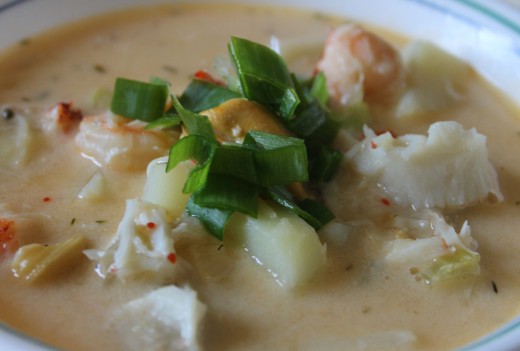
Newfoundland Seafood Chowder, healthied-up!
While I did opt for locally made organic butter, you could use an Olive Oil Margarine for an even lower fat chowder. On occasion I've also substituted 0.5% milk instead for the low fat half and half cream, whisking it into my roux to make a bechamel sauce before adding the mussel broth, clam juice and water, which also reduces the amount of fat in the chowder. I personally don't think anyone misses the fat in the flavour. Afterall...this is about the seafood, not the cream!


